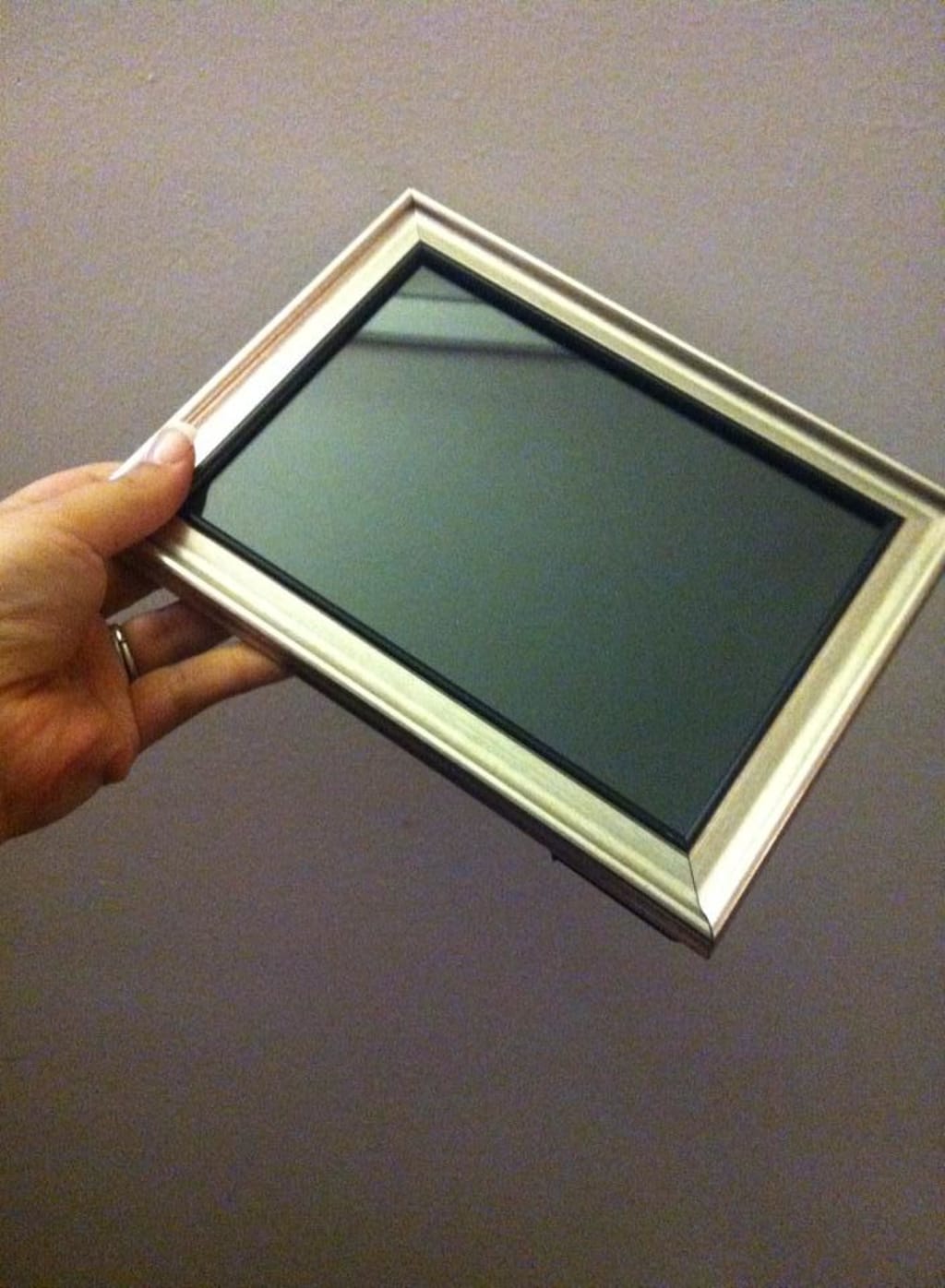A DIY Mirror Guide
Steps to Create Your Own Mirror

Mirrors are made from a smooth, polished surface that reflects light. Usually a mirror is made of a sheet of glass that has one side coated in aluminum, silver, or gold. That side is then painted, or covered with any solid material, so the reflected image can then be viewed.
Glass, the one major component of a mirror, is surprisingly one of the worst reflectors of light. With about only 4% of light reflected, glass is chosen due to its transparency and the easy moldable capabilities it has during production. Glass was first discovered in Phoenicia by the Egyptians. It was made into glass beads for jewelry 3,000 years ago. About 1,000 years later, Romans followed by improving techniques to make hollowed glass for drinking cups and jewelry. Glass is made when three ingredients, ok so maybe four including fire, are combined and then cooled. Silica, a component found in sand, soda (alkali), and lime are mixed together at high temperatures. While still hot and molten, it is shaped into molds. After the glass cools, it can be a very brittle material. It doesn’t handle tension the way metals do. The strongest form of glass is the "Prince Rupert’s Drop." This kind of glass is a rapidly cooled glob of glass, dropped as a hot ball into water. The molten glob, rapidly cooled in the water, has a fracture resistant core, and can’t be shattered, even with a hammer. However, if the thin tail of the "Prince Rupert’s Drop" is hammered, the whole entire drop will shatter into glass dust.
To make sheet glass, the heated silica is rolled between metal pins, cut into squares, and cooled on a flat surface. To mirror glass, one side is coated with metals like silver, gold, or chrome. Before the 1940s, due to its lack of tarnishing, Mercury had been an acceptable coating in the manufacturing of mirrors. The use of Mercury was discontinued because it was discovered that even though it evenly coated the glass, and made a perfect mirror, it sealed in toxic liquids. Aluminum became the common replacement.
Mirrors are made using four steps. All mirrors must begin with clean surfaces. One side must be properly prepared for the metal that it will be coated with to properly adhere. Curious about how to make a mirror, I found an easy DIY video on YouTube by angelgilding.com. They also have DIY mirror making products! This is something I HAVE to try! I would love to make my own black mirror! Here are the four basic steps with links for their products and a simple to follow DIY video. It seems pretty easy, so if anyone has tried already, or does after reading this, I would love to know your results!
For a Silver Mirror:
1. Cleaning the glass — Rubber gloves can help keep fingerprints off the glass surface. The glass is first washed with hot water and concentrated detergent. The cutting oil and dust particles along with any smudges are rubbed off with a soft cloth. After rinsing the surface with warm water, the cleaning process is repeated using the cleaner and a polishing substance, which hobbyists refer to as "Opticians Rouge" (also available at Walmart or on Amazon), but what is commonly known as Cerium Oxide. After scrubbing the surface that’s to be coated in the metal liquid with a thin slurry of the mix, the glass is rinsed again with warm tap water. Using a gentle spray of distilled water, the glass is again rinsed thoroughly.
2. Sensitizing the glass — The surface of the glass also must be sensitized before coating in silver. A "Tinning" solution is used to create a chemical bond between the silver and the glass surface. It can made by mixing 2 fluid ounces of distilled or de-ionized water and 2 fluid ounces of Tin for Silver. Made from Stannous Chloride, which is Silver Nitrate and Chlorine, Tin for Silveris a product available online. After cleaning and pouring off excess water, place the glass on rivets, with side for the mirror up. Keep the glass suspended above the bottom of a tub so the pour off can be easily caught underneath. Evenly pour the tinning solution over the surface of the glass. Let sit for 30 seconds. Carefully remove the excess by tilting the glass. Use a spray of distilled water to rinse the invisible layer of tinning. Be sure to not let the glass dry out before pouring on the silver.
3. Deposit the mirror — For the silver, there need to be equal parts, 15 ML each of silver solution, silver activator, and silver reducer mixed together. The site recommends 1.5 fl ozs of silver per square foot of glass to be coated. Pour evenly on the glass. The color will slowly change from brown to silver, as the silver deposits onto the glass surface. Let sit for five minutes, and during the wait time, gently tilt to remove any ridges so the surface is smooth. When the five minutes is up, tilt the remaining silver off the glass. Rinse well with distilled water and completely air dry the glass vertically, so any excess liquid can run off the surface to prevent water from becoming trapped under the silver. The color will appear an opaque blue when a light is shined behind the silvered glass. If the coat looks uneven or thin, the process can be repeated to make a deeper hue. Do not re-tin. A light behind a well-coated mirror will appear as a deep blue.
4. Paint the mirror — The silvered glass must be absolutely dry before you paint. Using a soft cloth or brush, paint any backing color onto the silver. You may need to use two coats. After drying, clean the front of the mirror and be sure to remove any excess paint. Frame with any material you would like.
Instead of, or in conjunction with, silver, you can use a unique pewter, cobalt or wrought iron twist and make your own mirror using the Galena Mirror line of products sold by angelgilding.com, just click on the link.
*Explore my e-books, available on Barnes & Noble, Scribd, and iBooks, today!
About the Creator
Lady Sunday
I'm a self-publishing author of fiction and I love to research and write creative non-fiction.






Comments
There are no comments for this story
Be the first to respond and start the conversation.